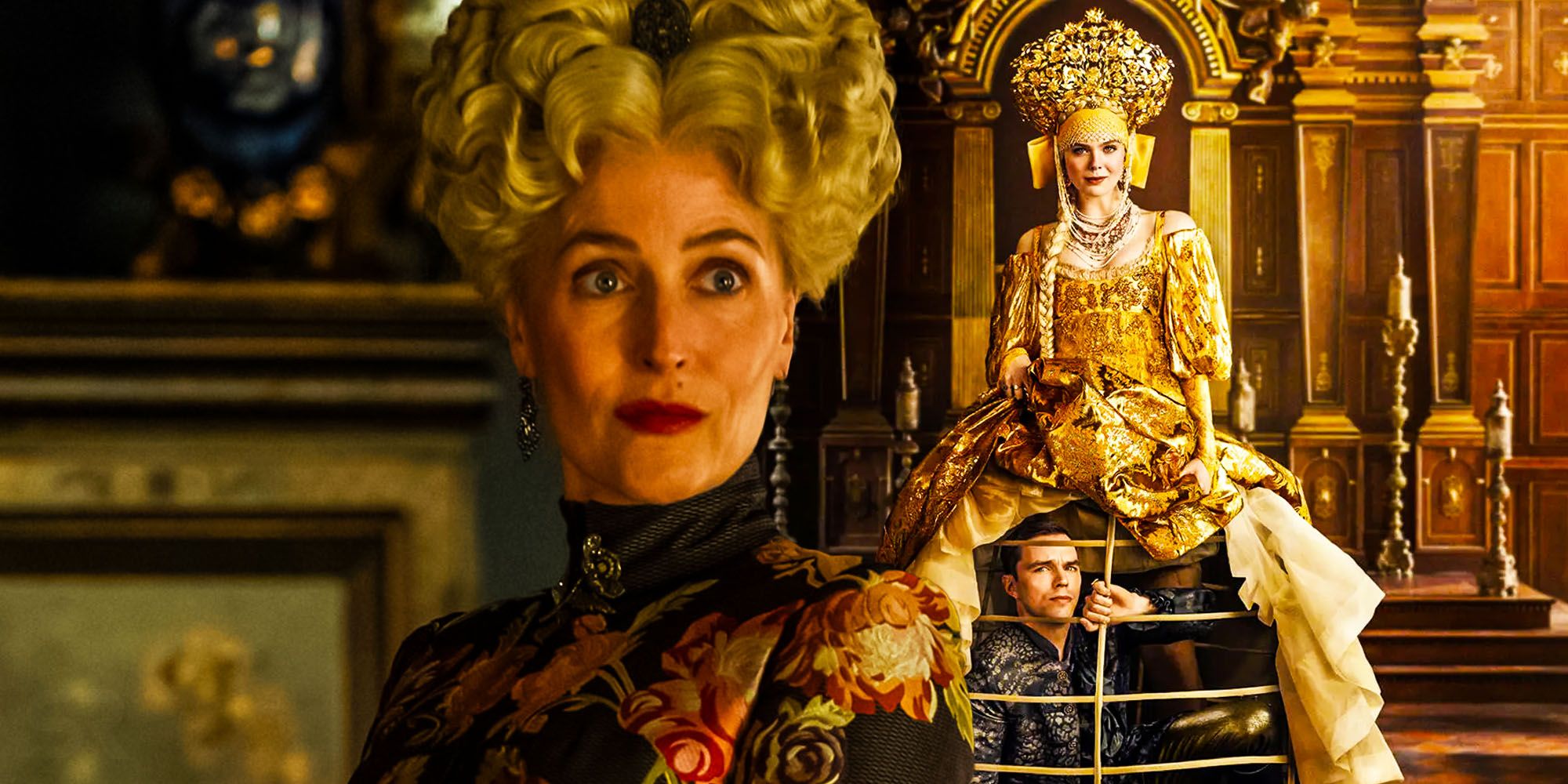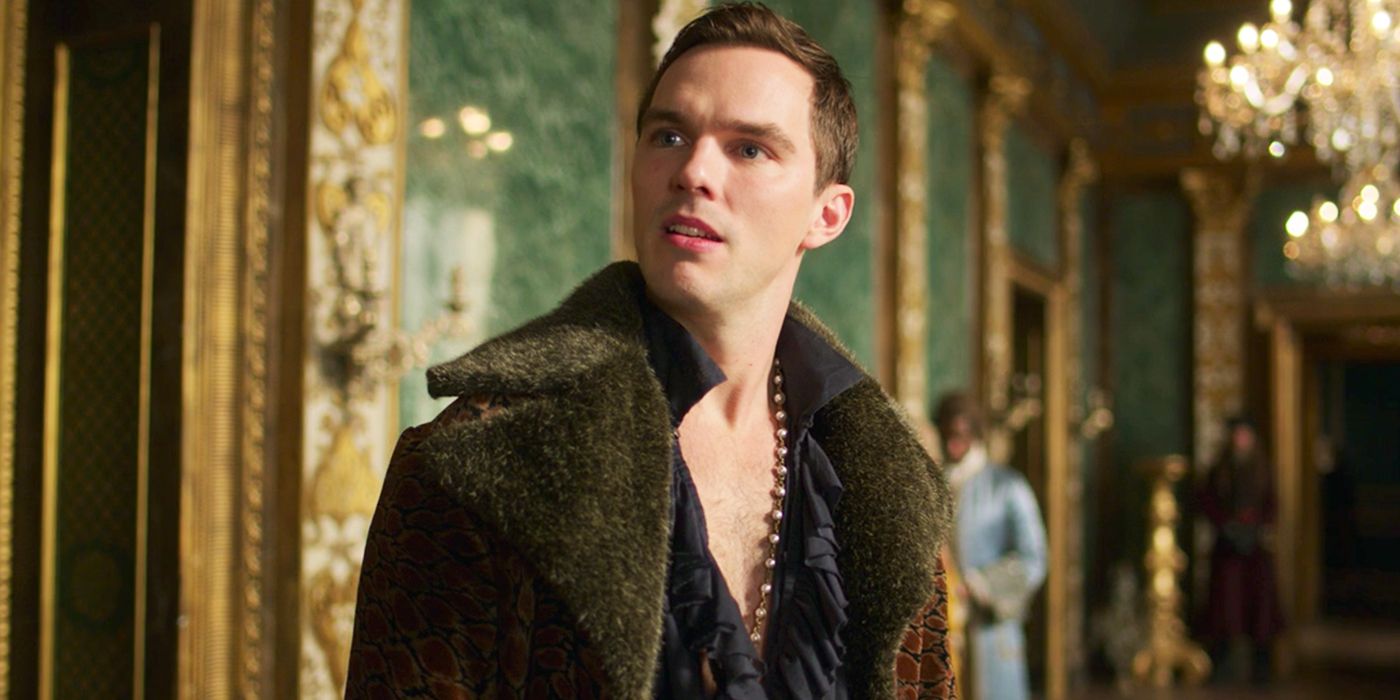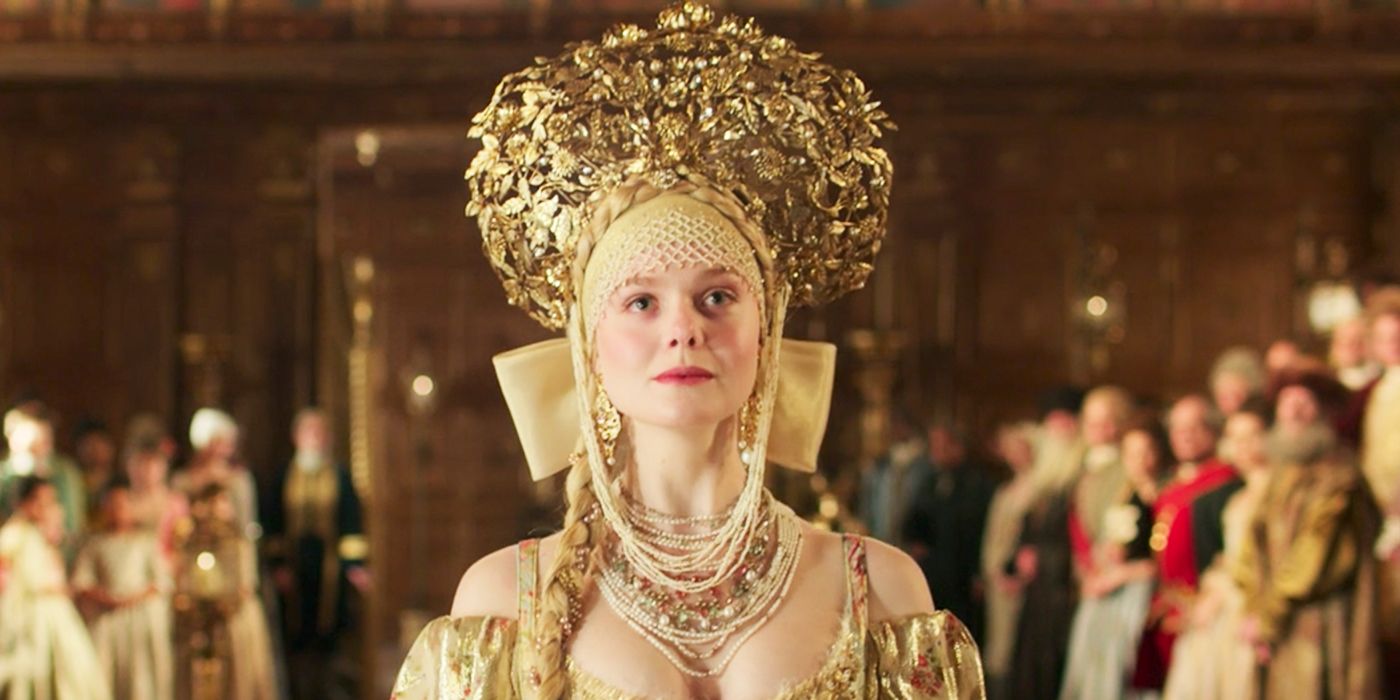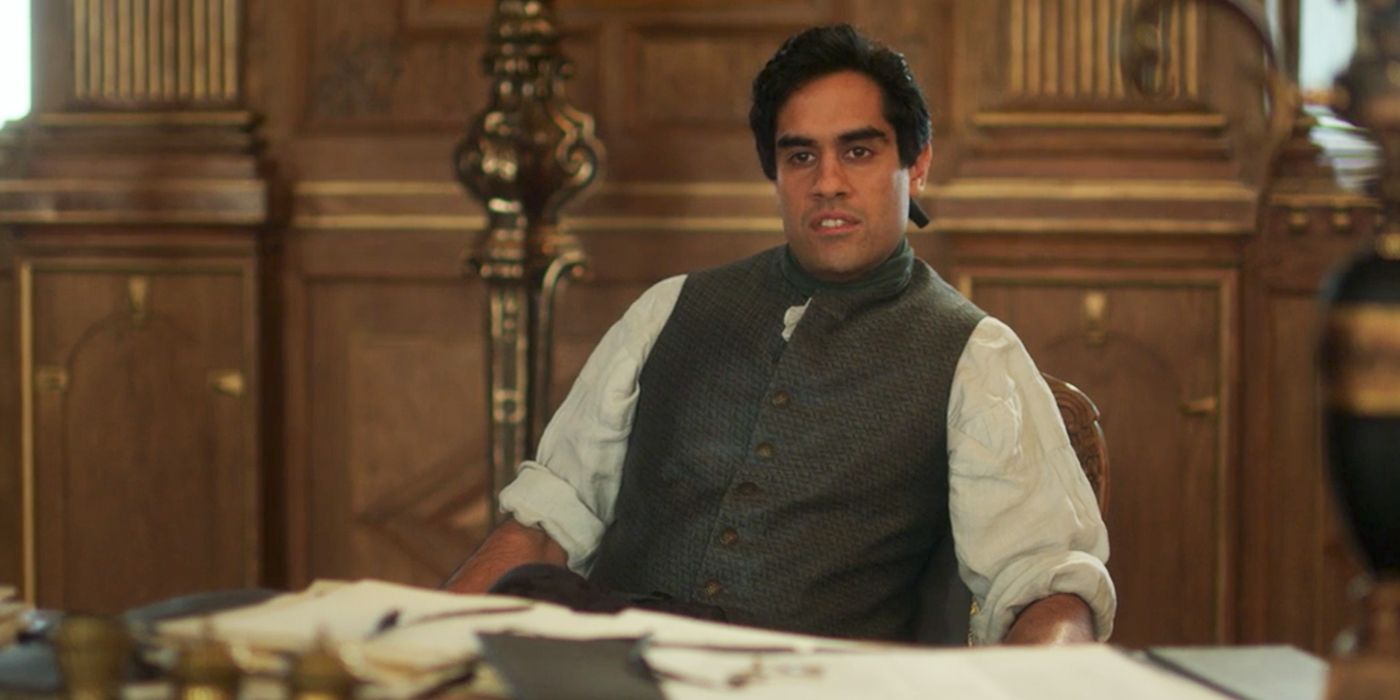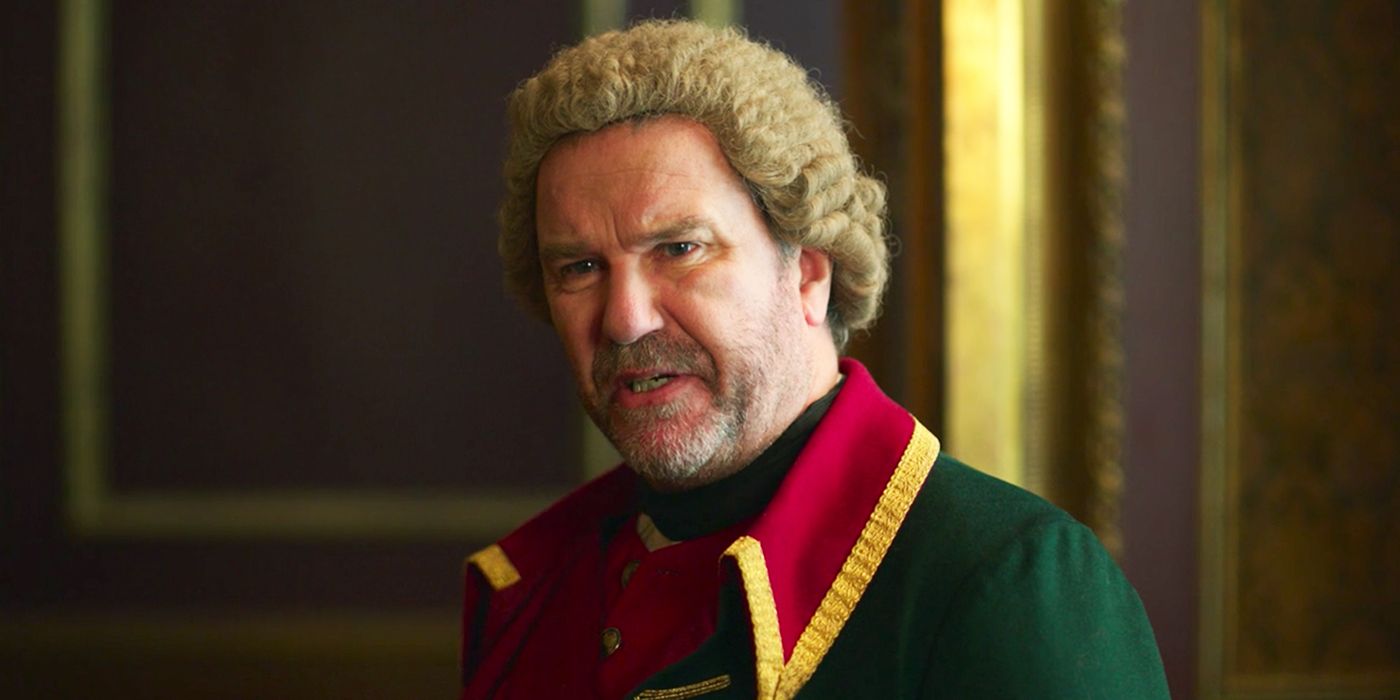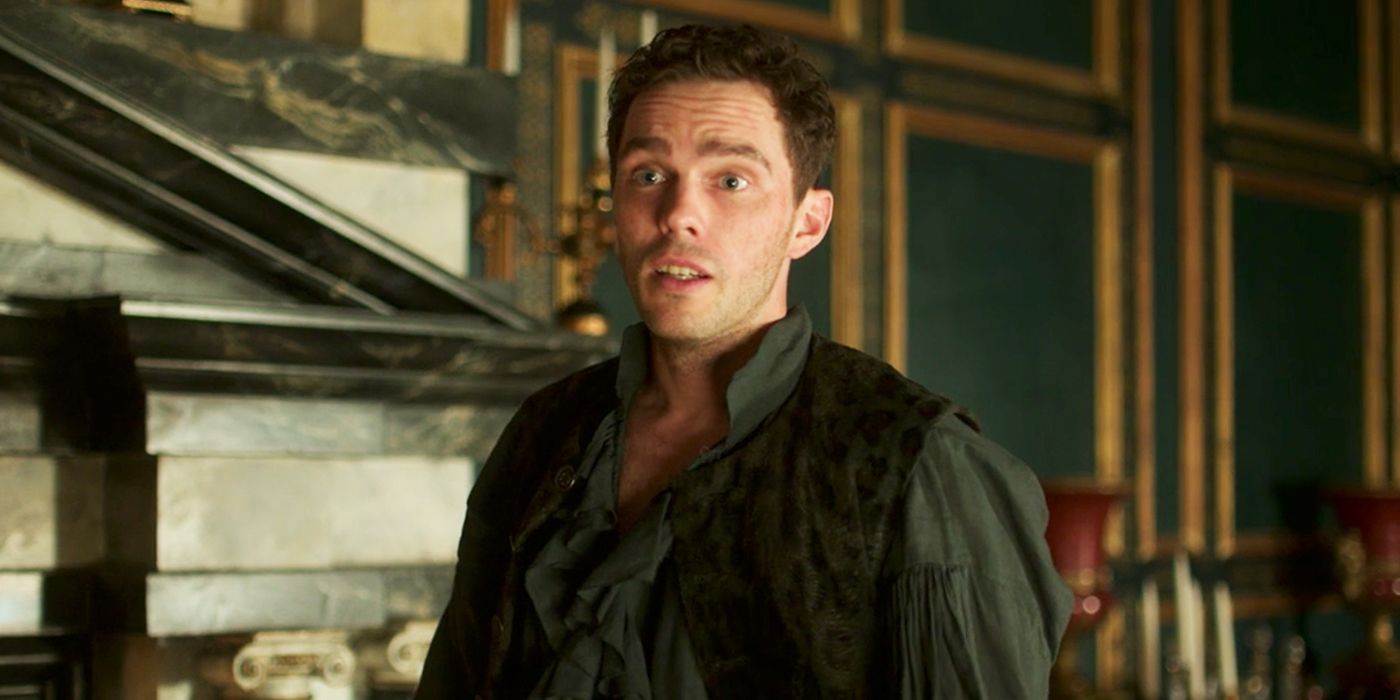Warning: Contains spoilers for The Great season 2.
Hulu's The Great season 2 proclaims itself to be “an occasionally true story” which might leave viewers questioning how historically accurate and real the show really is. The Great is written by Tony McNamara and is primarily based on a play that he wrote some years before. The intent was never to tell a story that was entirely accurate to history, but how many changes to the true historical story did he really make for The Great season 2?
The Great season 2 picks up four months after the events of season 1 which saw Catherine (Elle Fanning) enact her coup against Peter (Nicholas Hoult) with the help of Orlo (Sacha Dhawan), Velementov (Douglas Hodge), and Mariel (Phoebe Fox). After seizing power, The Great season 2 sees Catherine struggling to enact progressive change to longstanding Russian traditions as she prepares for the birth of her son Paul. Her political maneuvers eventually end up with her facing off against the Ottomans.
In The Great season 1, the show did not trouble itself too heavily with historical accuracy. By the time of The Great season 2 that “occasionally” is doing a lot of work. While there are a lot of small details that are drawn from Russian history, they almost serve as Easter eggs to the larger story being told. Fundamentally, many of these people were not alive or in power at the same time as each other, and often characters are not based on historical figures or are based on a blend of different people. However, while The Great should not be considered a true history of Russia in the 1700s, there are some true stories woven in there. Here are the key parts of The Great season 2 that are historically accurate.
Catherine The Great Couped Her Husband
As in The Great, Catherine the Great did indeed enact a coup against her husband to seize control of Russia. However, the timeline for these events was drastically altered for the show. The Peter that appears in the show is an amalgamation of Peter II, who was an ineffectual leader in many of the ways that are represented in The Great, and Peter III, who Catherine married in 1745 before he became emperor. At that time, his aunt Elizabeth Petrovna was the Empress of Russia and Peter III did not become emperor until she died in 1762, having chosen him as her successor. While The Great suggests that Elle Fanning's Catherine faces opposition as a ruler because she is a woman, this was not really the case as Russia had already had several female rulers; Catherine the Great was in fact Catherine II. Elizabeth had been a formidable ruler and had been preceded by Anna of Russia and Catherine I before her. Regardless, Catherine instigated her coup against Peter just six months after he took power.
The other large change to the coup in The Great is the eventual result. Having already garnered the support that she needed, upon hearing that Peter had had one of her co-conspirators arrested, Catherine then had Peter arrested and forced to sign papers abdicating the throne. While The Great has Peter survive the coup, the real Peter III died just eight days afterward while imprisoned. Officially, Peter died of a stroke; however, rumors suggested that he might have been assassinated by Alexei Orlov, a supporter of the coup and the younger brother of Grigory Orlov, who is the inspiration for the character of Orlo (Sacha Dhawan).
Catherine Had A Son Named Paul
As The Great shows, Catherine did give birth to a boy called Paul who would go on to become Paul I. However, Paul was born in 1754, almost eight years before the coup took place and the death of Peter, and not in the aftermath of the coup. There is some debate over who the father of Paul actually was: while Catherine told him that it was Peter she had many lovers and there were suggestions that Paul might have been the result of her relationship with Sergei Saltykov.
In The Great, Catherine has to go through a public birth so that the people can be assured that her baby has been born and is the true heir. While this was common practice at the time, Catherine was actually shut away in the Summer Palace by Elizabeth and Peter for the birth of her son. She was reportedly left unattended on the floor for several hours after the birth while Peter and Elizabeth tended to the baby before a midwife returned to help her.
Catherine The Great Wanted To End Serfdom (But Couldn’t)
In The Great season 2, Catherine decides to free the serfs in a single act, going against Orlo’s assurances that it would need to be a slower process. While she tries to just force the issue through the result is a bloody fight between the nobles and the serfs and Catherine has to walk back her plan to be able to stop the fighting. Ultimately, she has to declare that she won’t free Russia’s serfs as part of a political move to keep the nobles on her side.
This a bloodier version of what happened in real life, but not an entirely inaccurate representation of events. Before coming to power, Catherine the Great had always wanted to free the serfs. Unfortunately, once she got into power she realized that the heavily agriculture-based economy of Russia relied on the serfs and that the nobles would not tolerate them being freed and trying to do so would throw the country into chaos. While she never actually made the proclamation that she does in The Great, she effectively had to cave to political pressures in a very similar way. Over time she continued to draw up new plans and developed a group of people to work on a constitution that might be able to enact the changes that she wanted to see but the results were deemed too liberal for Russia at the time and not enacted. The Great season 2 does relatively accurately depict some of the other changes that she made, however, as she did push for literary reviews and a greater focus on the sciences.
Catherine The Great Took Russia To War With The Ottoman Empire
Throughout The Great season 1, Catherine abhors violence and wants to avoid wars. This is much the same in season 2; however, as she is exposed to more violence and the realities of the world her viewpoint begins to change. After attempting diplomatic negotiations over a border dispute with the Ottomans, she eventually ends up killing the sultan and moving for war with the Ottoman Empire with a plan to free the people who live under Ottoman rule.
While it seems there is little evidence that Catherine the Great herself killed a sultan, she did take Russia to war with the Ottomans. The Ottoman Empire had long been an enemy of Russia dating back to Peter the Great (who was Peter III’s grandfather). While The Great attributes a noble goal of freeing those who suffered under oppressive Ottoman rule, history suggests a more self-serving cause. In the wake of her failure to enact larger reforms, Catherine took up an opportunity to go to war with the Ottoman Empire in the hopes of raising Russian morale through a show of strength and national power.
Pugachev, Peter’s Double, Was A Real Person
Throughout The Great season 2, one of Peter’s lookalikes makes repeated and notable appearances. He is noted as being the only good double, both because he looks just like Peter (he is also played by Nicholas Hoult) and is seemingly extremely hard to kill. The name Pugachev is an important one for the history of Catherine the Great’s reign, and it is clear that Tony McNamara drew on the reference intentionally, but the true history is somewhat different.
In 1773, over a decade after the coup and Peter’s death, a man named Yemelyan Pugachev began the most significant rebellion against Catherine for all of her reign. There was already a good amount of unrest as not only had Catherine failed to free the Russian serfs, she had in fact caused the hold that nobles had on them to be strengthened in some significant ways. Pugachev leveraged this unrest and declared that he was actually Peter III and that he had not died, then went on to proclaim that he was freeing the serfs. In 1775, Catherine’s forces captured and executed Pugachev. While some accounts state that Pugachev bore an uncanny resemblance to Peter III, it seems that this was largely introduced after the fact as a form of legend.
The grains of historical truth in The Great are few and far between. However, that is fundamentally not to point of the show, as the tagline makes clear. It is interesting to know the true story behind The Great, but the show is about people and social issues as they are relevant today, and not intended to be any sort of historical document.
The Great season 2 premieres Friday, November 19 on Hulu.

